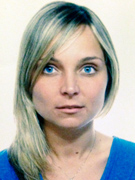RSNA Press Release
- Ultrasound-guided delivery of platelet-rich plasma (PRP) improves functionality and reduces recovery time in athletes with degenerative disease of the tendon.
- Researchers evaluated PRP in athletes who had degenerative tendinosis in the Achilles or patellar tendon.
- Pain and functionality were significantly improved in all patients after PRP therapy.
PRP Therapy Improves Degenerative Tendon Disease in Athletes
Released: December 2, 2013
| Media Contacts: | RSNA Newsroom | 1-312-949-3233 |
| Before 11/30/13 or after 12/5/13: | RSNA Media Relations: | 1-630-590-7762 |
| |
Linda Brooks 1-630-590-7738 lbrooks@rsna.org |
Maureen Morley 1-630-590-7754 mmorley@rsna.org |
CHICAGO—Ultrasound-guided delivery of platelet-rich plasma (PRP) improves functionality and reduces recovery time in athletes with degenerative disease in their tendons, according to a study being presented today at the annual meeting of the Radiological Society of North America (RSNA).
PRP therapy is a recent development in which blood is collected from the patient and then spun in a centrifuge to separate the PRP from other blood components. The PRP is then injected under ultrasound guidance into the target area, where it stimulates cellular growth and healing.
The therapy has grown popular among professional athletes from a variety of sports, who are looking to avoid surgery or prolonged recovery periods. Tiger Woods, Peyton Manning, Kobe Bryant and Rafael Nadal are just a few sports superstars who are reported to have undergone PRP therapy in recent years.
"PRP enables regeneration of the tendons and reduction of pain thanks to its regenerative and anti-inflammatory properties," said study author Alice La Marra, M.D., radiology resident at the University of L'Aquila in L'Aquila, Italy.
Dr. La Marra and colleagues recently evaluated PRP in 50 athletes who had degenerative tendinosis in the Achilles tendon, which connects the calf muscle to the heel bone, and 30 who had tendinosis in the patellar tendon, which connects the kneecap to the shin bone. Tendinosis is common in athletes and is caused by a repeating cycle of damage and repair. The Achilles and patellar tendons are common sites of tendinosis.
The patients underwent ultrasound-guided PRP every 21 days for a total of three treatments. MRI was performed before the procedures and 30 days and one year after the last treatment. The researchers used standard measures of functionality and pain to determine the severity of the tendinosis.
Patients with tendinosis of the Achilles tendon saw an overall improvement of 80 percent in pain and 53 percent in functionality after the PRP treatment. Those patients who had tendinosis in the patellar tendon saw a 75 percent improvement in pain and a 50 percent improvement in functionality.
The signal intensity on MRI, which provides a measure of tissue integrity, normalized in 90 percent of the PRP patients.
"Our study showed that in patients who underwent PRP treatments, there was an improvement of functionality, a decrease in pain and a normalization of the signal intensity seen on MRI," Dr. La Marra said. "Therefore, our experience proves that PRP infiltration may be a good therapeutic alternative for the treatment of Achilles and patellar tendinopathy in athletes."
Current treatment for degenerative diseases of these tendons is based on the severity of the lesion and the age and activity level of the person, Dr. La Marra said. Common treatment options include physical therapy, corticosteroids and surgery.
"Our study showed that PRP is the better option. Compared to the other therapies, it allows a faster and more efficient recovery," she said.
In addition, Dr. La Marra pointed out that the use of corticosteroids is risky for professional athletes, as it can result in failed drug tests.
"Considering the results obtained in recent years, we hope that the use of PRP in tendinosis becomes routine for patients who practice sports activities, even at a competitive level," she said.
Co-authors are Carlo Masciocchi, M.D., Antonio Barile, M.D., Luigi Zugaro, M.D., Silvia Mariani, M.D., and Lorenzo Maria Gregori, M.D.
# # #
Note: Copies of RSNA 2013 news releases and electronic images will be available online at RSNA.org/press13 beginning Monday, Dec. 2.
RSNA is an association of more than 53,000 radiologists, radiation oncologists, medical physicists and related scientists, promoting excellence in patient care and health care delivery through education, research and technologic innovation. The Society is based in Oak Brook, Ill. (RSNA.org)
Editor's note: The data in these releases may differ from those in the published abstract and those actually presented at the meeting, as researchers continue to update their data right up until the meeting. To ensure you are using the most up-to-date information, please call the RSNA Newsroom at 1-312-949-3233.
For patient-friendly information on ultrasound and MRI, visit RadiologyInfo.org.
| Abstract: |
Video clips
Images (.JPG format)
 Figure 1. Esaote Linear Probe High-res (TIF) version (Right-click and Save As) |
 Figure 2. Esaote MyLab90 High-res (TIF) version (Right-click and Save As) |



 PDF
PDF